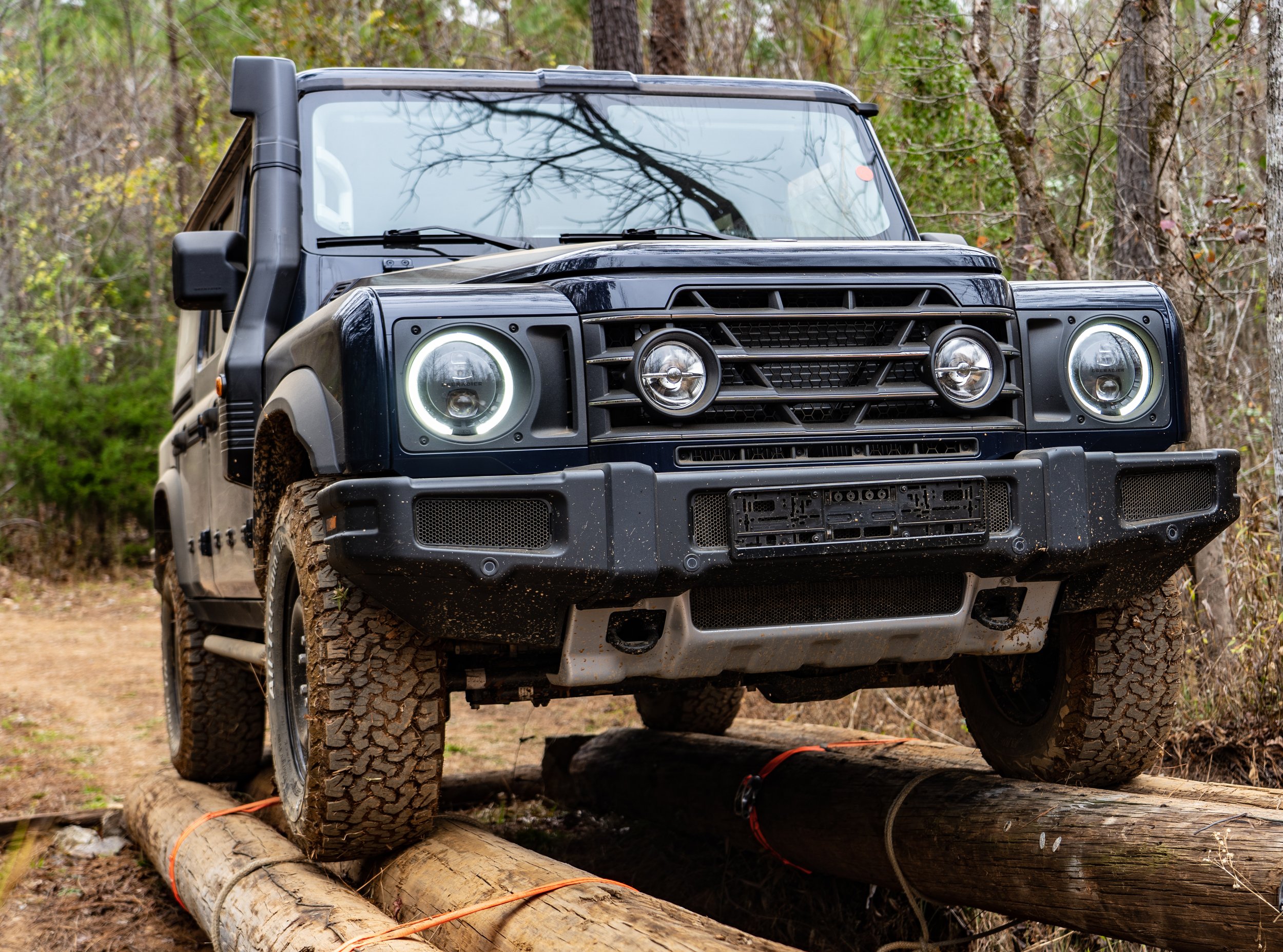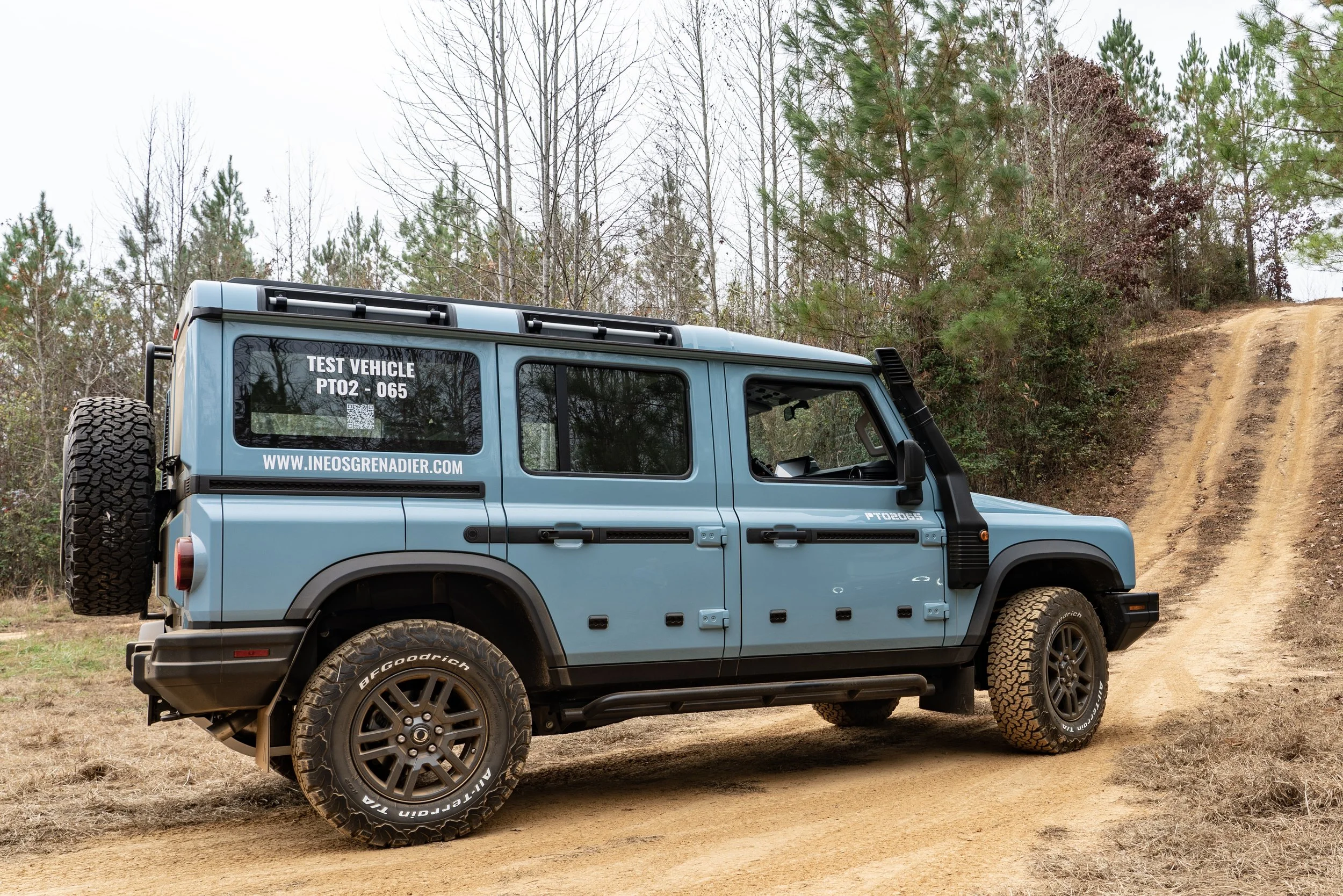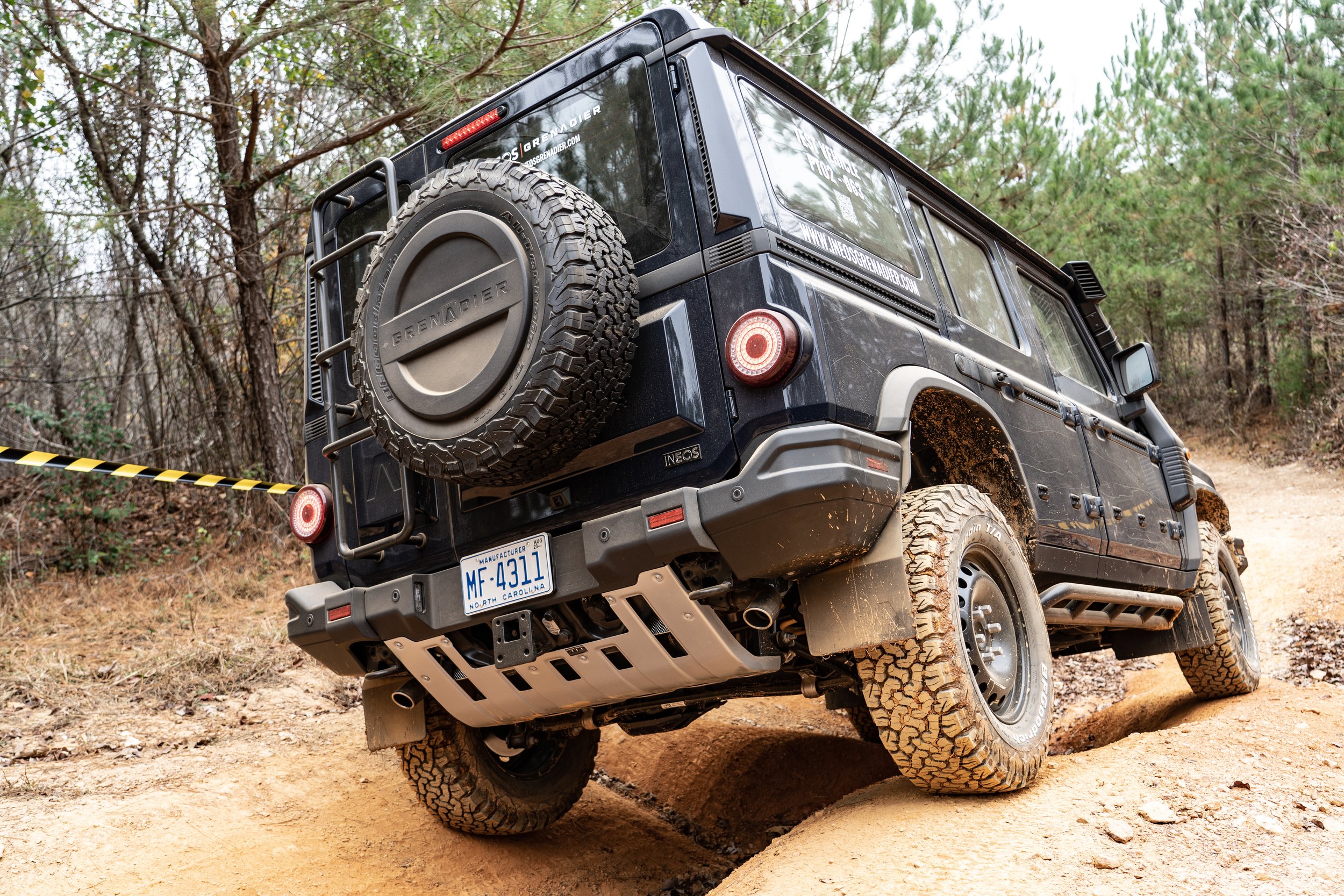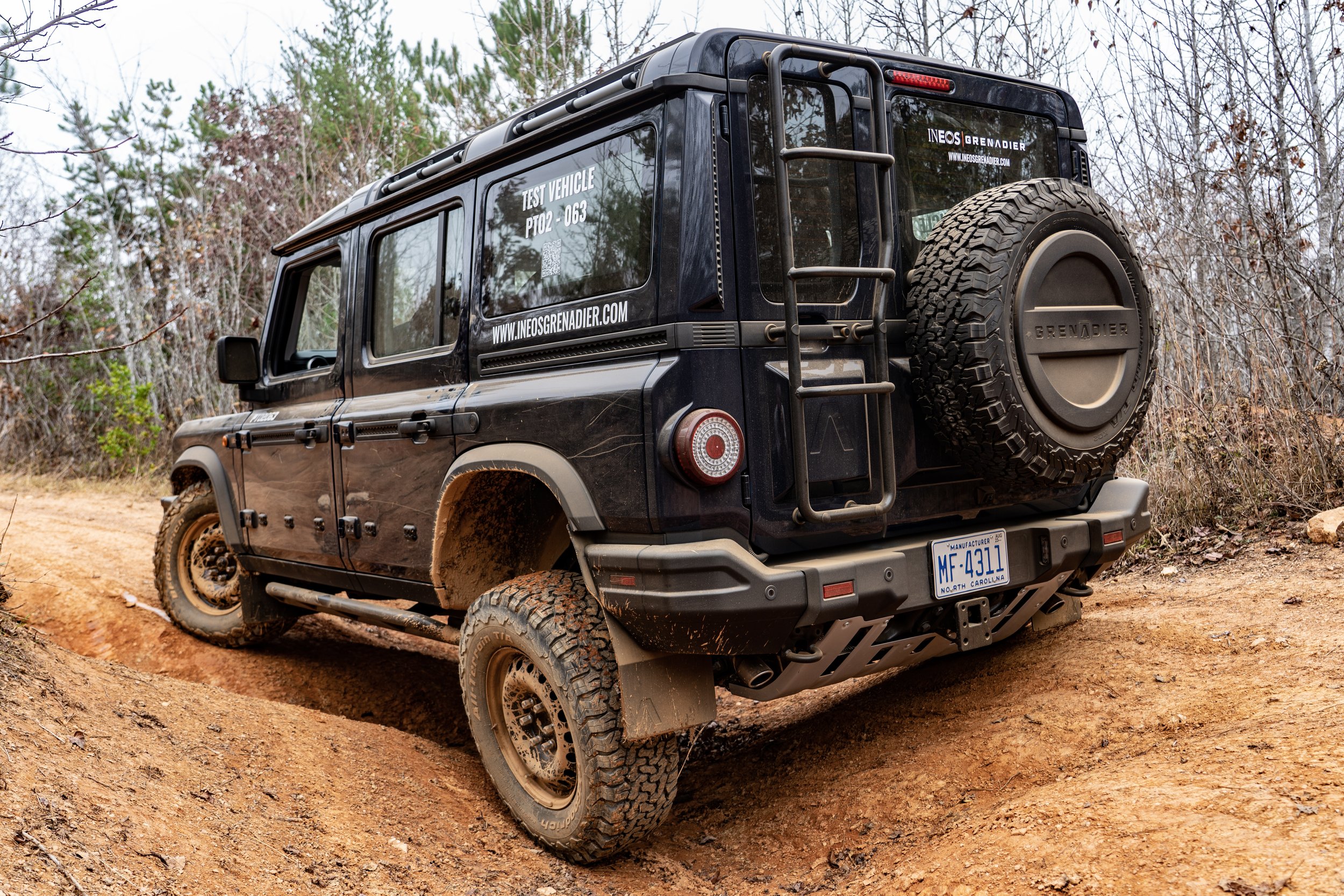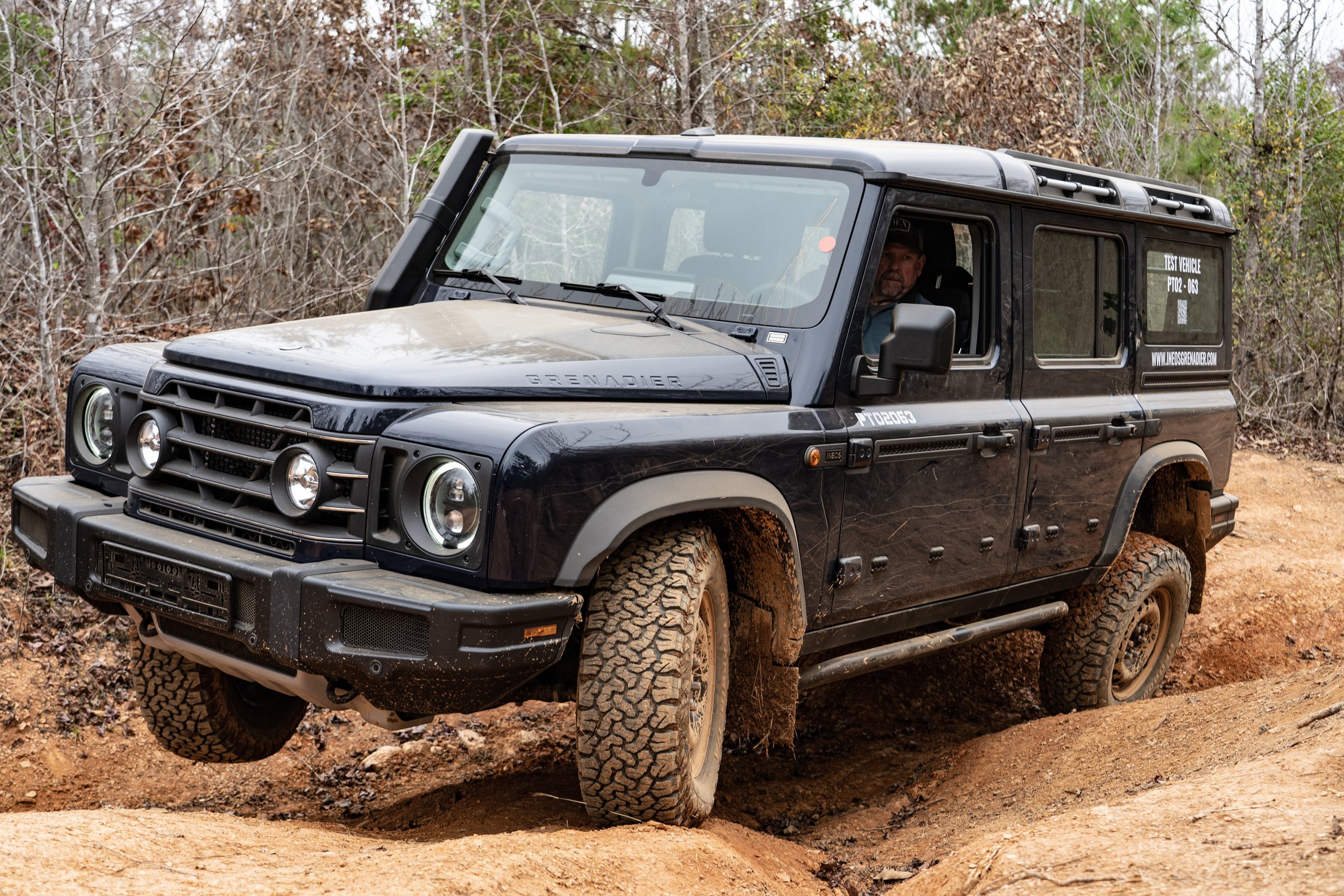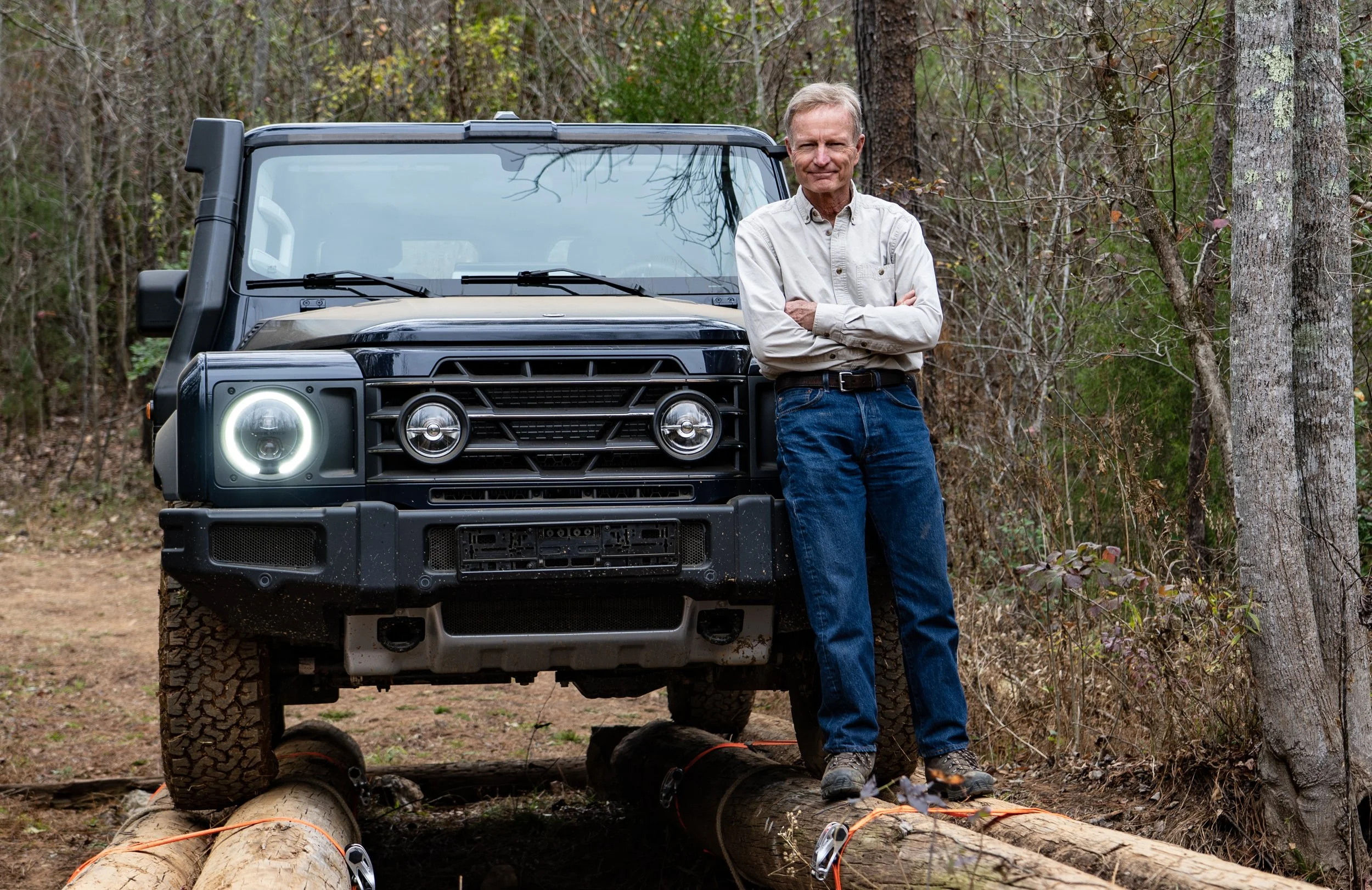Ineos Grenadier prototype first drive
It was a cool, gray November morning when I drove up to the Overland Experts headquarters in North Carolina in a mind-numbingly dull rented Dodge Journey. What awaited me was the furthest thing from dull: no fewer than seven Ineos Grenadier prototypes, here for testing and data recording, and made available this day for a small invited group to experience on the extensive OEX driving course.
Previous such events led me to hope for an hour, perhaps two, actually piloting, and the rest riding along and gathering what impressions I could. Instead, due to how the other participants were grouped with their respective outlets, I wound up with my very own example and five solid hours of driving time. Shepherded by OEX’s Ted Dinwiddie, a hugely experienced 4x4 trainer and long-time long-distance friend via the usual social media channels, I had the opportunity not just to explore the entire course, but to do so repeatedly, trying the same routes again and again with different applications of gearing, lockers, and approach lines—not to mention different applications of my own skill or lack thereof. Ted was polite enough to ignore the instances of lack thereof.
The basic specifications of Sir Jim Ratcliffe’s very expensive project to produce what he and tens of thousands of Land Rover Defender fans think the new Defender should have been are well known. The separate chassis is fully boxed, as on the original. But this is not the flat-sided structure of welded 14-gauge sheet metal that supported every Land Rover from the days of post-WWII steel rationing right up to 2016—torsionally adequate but desperately rust-prone. The Grenadier chassis is a massive, deep-sectioned unit engineered by Magna-Steyr (the company responsible for the G-Wagen’s equally stout chassis). It employs steel up to twice as thick as the Solihull original, E-coated, powder-coated, and hot-wax treated to prevent corrosion. Beam axles are supported by coils and five-link Eibach suspension, with Brembo discs all around. Anti-roll bars (not “anti-sway” bars) front and rear should sharpen on-road handling at the expense of some compliance (the front bar is not disconnectible as on the Wrangler Rubicon and Bronco Badlands).
The only engine available in the U.S. is a BMW-sourced, 3.0-liter, inline six-cylinder petrol engine, with direct injection, a twin-scroll turbocharger, and a water-to-air intercooler. It’s essentially the well-known B58 used in several BMW cars, but tweaked for torque at lower engine speeds rather than high-rpm power (hurrah!). Since versions of this engine produce over 500 horsepower, it’s reasonable to assume it will be long-lived in its under-stressed Grenadier spec. Behind it is the excellent ZF 8HP51 eight-speed transmission and a bespoke Tremec transfer case with a 2.5:1 low ratio. (This collaboration with experienced component manufacturers is one of the notable features of Sir Jim’s approach to building the Grenadier so that it is engineered properly from the start.)
So how does it drive? First, rejoice that Ineos has permanently eliminated “Land Rover Elbow” as an affliction. There’s plenty of room inside, and you won’t need to upgrade the seats to Recaros because they already are. The best summary I can offer about the driving position was that I simply didn’t notice anything about it—a very good thing. Despite being undoubtedly a bit tense at piloting a more or less priceless prototype, I was comfortable all day and not the least bit stiff afterwards. I’ve since read complaints from a few journalists about the offset pedals. If they are it didn’t strike me at the time, so it can’t be severe. Steering weight? Didn’t notice it. Throttle modulation? Any glitches were clearly my own doing. All good things. Various programing functions were still in flux when I drove this prototype—in fact I was asked not to photograph the dash—so I can’t say if eventual features will include such options as decreased throttle sensitivity in low range. In a way I hope not—one of the stated goals of the Ineos design is to reduce unneeded complexity. I found it easy to brace the outside of my right foot against the transmission tunnel and roll on the throttle to control lunging.
The engine felt perfectly suited to the vehicle and its purpose—there was neither a lack of power nor a substrate-flinging surfeit of it. The low-rpm torque was apparent on steep climbs—so much better than most current gasoline V6 4x4 engines, which have torque peaks as high as my old 911SC. Shifting was smooth in both high and low range, and manual override allows more direct driver control if desired. (The shifter is a mod-looking thing that contrasts oddly with the simple black ball of the transfer-case lever.)
Heading out from the OEX offices, I got a feel for the Grenadier’s ride over ruts and small rocks in comparison to my own 1993 HZJ75 Land Cruiser (far superior, unsurprisingly), my wife’s former 1985 Defender 110 (perhaps not quite as compliant) and a Wrangler Unlimited (noticeably better, especially in terms of side-to-side “head-toss,” which can be severe in the Jeep). The latter is impressive given that the Grenadier has a 20-percent load-capacity advantage over the Wrangler.
Soon enough Ted directed me off the main road into a series of axle-twisting gullies. I was very curious to what extent the anti-roll bars would inhibit suspension travel, and the answer was . . . some, but not nearly as much as I feared. Returning to the Jeep comparison, the Grenadier seemed to have at least as much compliance as a Rubicon Unlimited with the front anti-roll bar engaged—although not, of course, as much as one with the bar disengaged. It certainly has far more than a new Defender with its all-independent suspension, and far more than the typical Japanese or American SUV. At several points I had Ted take the wheel while I got out to photograph, and the images seem to confirm my behind-the-wheel impressions.
(Speaking of impressions, one stayed with me throughout the day: Rarely did I hear so much as a squeak or groan out of the Grenadier’s body structure. It conveyed a solidity that would be impressive in a full-on production vehicle; in one repeatedly referred to as a “prototype” it was little less than astonishing, and more than any other revelation throughout the day convinced me that Sir Ratcliffe’s team has produced an expedition-worthy machine.)
Some claim suspension compliance doesn’t matter if you’ve got front and rear diff locks. I disagree. Having all four wheels in contact with the earth as much as possible helps stability, minimizes wheel spin, and reduces those “whoawhoawhoa!” moments when the vehicle tips onto a tire hanging in mid air. Eventually, however, even the Grenadier’s compliance did run out and we began lifting a wheel or two here and there. I can’t comment on the response time of the traction-control system, because I’m pretty sure it was still in the development stage, but I did learn that it will remain functional in low range. I simply drove as if there weren’t any traction control at all, using a bit of momentum to get past minor wheel-lift spots. I did not try any left-foot braking, which should work as well on a Grenadier as it does on any other open-diff 4x4.
Of course, once one or both axle diff-locks were engaged, traction entered an entirely new universe. And doing so did bring up one significant criticism: The diff-lock buttons, located on the otherwise cool C-47-ish overhead console, are simply in the wrong place. In a dicey situation (a given where lockers are needed), having to move and refocus one’s vision from 20 feet in front of the vehicle to a spot 12 inches away and overhead is, if not hazardous, troublesome. Contrast this with the Bronco’s brilliant row of traction-aid buttons right atop the dash. You might say, rightly, that I was struggling to find things to criticize, but it was a notable ergonomic glitch. Okay, one more: I remain . . . unconvinced . . . regarding the vestigial display directly in front of the driver. As far as I could determine (note, again, the prototype aspect) it will house only warning lamps. Speed, RPM, and other information will all be on the large center screen. Ineos says this is to optimize visibility over the hood (sorry, Jim, bonnet), which it does to an extent; I’m just not sure having to look to the center of the dash to check your speed is worth the trade-off.
Back to ditches and hills. The Grenadier’s approach and departure angles are virtually identical at a very good 36.2 and 36.1 degrees—a much better arrangement than the more common steep approach angle and shallow departure angle, which is more likely to hang up. In the Grenadier I could be sure that if the front cleared, the rear would too. Breakover is also very good at 28.2 degrees; fording depth is 31.5 inches, dead even with the Wrangler Rubicon on its stock tires, and ahead of both the Mercedes Gelandewagen and the original Defender. There is also a Wade Mode, which shuts off the radiator fan. Nice. I have read but have not confirmed that the critical side slope angle is 45 degrees, which would be outstanding if true.
By the end of the day, the OEX course had presented not a single significant challenge to the Grenadier. Note, however, that despite the comparisons I’ve made here, the Grenadier was not intended to compete with the Jeep Wrangler or Ford Bronco. The first owner to install a four-inch lift and 35-inch tires will be missing the point as far as I’m concerned. The Grenadier was designed to be a comprehensively re-engineered and hugely improved successor to the original Land Rover Defender, one of the most legendary and highly respected expedition vehicles on the planet—but one whose significant shortcomings had become apparent. The Grenadier’s combination of capability, comfort, room, load capacity and towing ability, and relative (for the 21st century) simplicity, just begs for someone to aim it at Mauritania, not Moab. I hope the Grenadier will be around long enough to forge its own legend.
Many, many thanks to Graham Jackson, who sent this opportunity my way. His scheduling conflict was my good fortune.
Ineos is here.
Look for a full technical review in the spring 2023 issue of Wheels Afield, due out in May.

